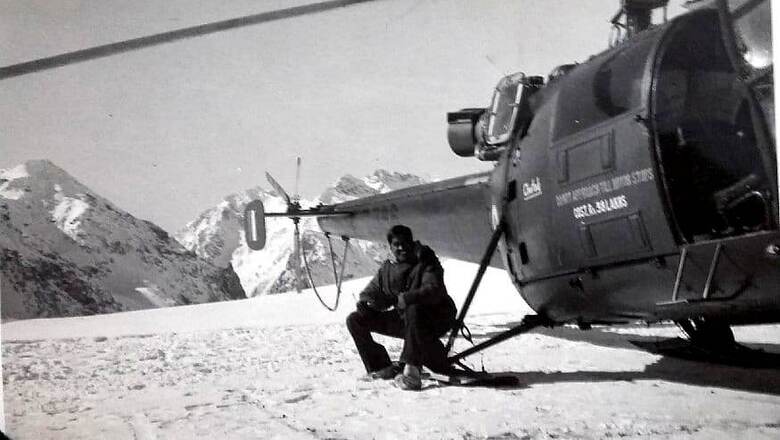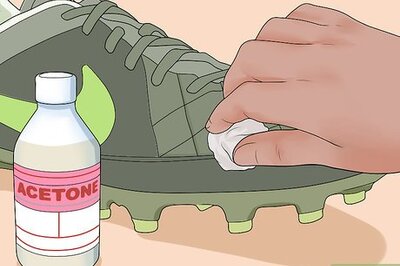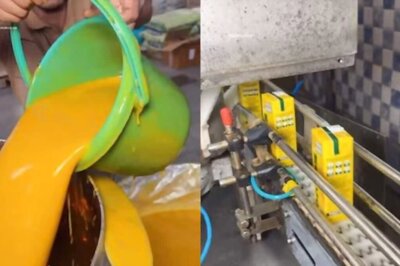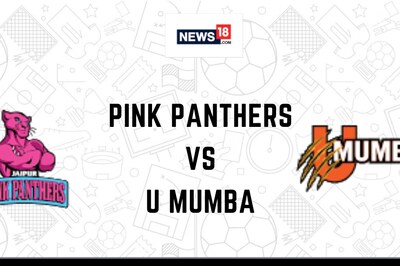
views
The very bloody skirmish at Galwan Valley raised tempers in our country – and rightly so. That China would unilaterally try and shift the LAC to its advantage has been opposed by our Army with the resoluteness that only an Indian jawan has. That we had twenty fatalities is twenty too many; many were reportedly injured and were visited by PM Modi. Since this event has been under public gaze, it may be opportune to give the lay public an idea of how a casualty gets shifted from the frontline to the nearest medical facility.
We, in India, are au fait with American war movies, where a full throated shout of ‘MEDIC’ results in a medical corps soldier rushing up to the wounded. What happened in Galwan, we do not know as yet (one day the story would come out), but one is sure that once the wounded were brought back to the rear (perhaps the confluence of the Shyok and Galwan rivers), the medical personnel of our Army Medical Corps (AMC) would have swung in to action. These medics are the unsung heroes of our Armed Forces, who are up front where bullets are whizzing around and life is but a bullet away. The nursing assistant and doctors would have administered first aid, taken stock of the seriousness of each casualty and decided on who needed to be evacuated and by what means. While the non-serious ones would have been taken by ambulance to the nearest Advance Dressing Station, a call would have gone out to get helicopters for the serious jawans to be evacuated to a better facility at Partapur (just across Khardung La) or to General Hospital (GH), Leh, which is a pretty modern hospital by any standard.
The scene shifts to the helicopter base – of the IAF or the Army Aviation. The Flight Commander’s phone rings and he is informed of a Cas Evac. A Cas Evac is priority number one and other commitments get relegated. The crew prepares a map – normally, in the forward areas, every nook and cranny in the hills is known to experienced pilots - a helicopter designated and fueled for the mission, a flight plan sent on telephone to the Air Traffic Control and the pilots rush to the helicopter. A quick start, rotor engagement and the helicopter gets airborne.
Let’s get in to a cockpit, and having flown many such missions in my life (actually, all chopper pilots do that) it would be good if one runs through a few actual cas evacs done. Many are ‘routine,’ in the sense that on reaching the helipad the captain of the helicopter checks that the casualty has been certified fit by a medical person to travel by air, the patient shifted from the ambulance stretcher to the helicopter stretcher (well, they do not match, and this is sometimes quite painful for the casualty) and a medical assistant gets on board, if the patient is very sick; at times there is a running IV line inserted too that has to be managed. One must remember that the helicopters being talked of are bare bones military machines which the next day may be called upon to carry jerry cans of kerosene!
And if it is a Cheetah helicopter, then there is no stretcher and the casualty is made comfortable (comfortable??) on the floor. This takes me to a sortie in 1995 from a helipad on Siachen. After finishing the day’s programme we were planning to come back to Leh when a P1 Cas Evac came up – a Priority 1 cas evac means that the patient is extremely critical and requires immediate evacuation to the rear.
We got airborne for the 12 min flight to G-III from Base Camp. On touch down the casualty was hurriedly put on the Cheetah floor (no stretcher in a Cheetah there), some medical papers thrust in our hand, doors closed and we took off back for Base Camp – cutting corners and as fast as we could take our Cheetah at that altitude.
I looked back – he was a Naga boy, a strapping young man who would give our film heroes a run for their money. But he was delirious, as he was afflicted with cerebral edema, a near fatal condition where fluid gets deposited in the brain. We could see the ambulance and AMC personnel waiting at Base Camp as we landed.
To save time, we did not switch off so that the casualty could get offloaded quickly. Off went the ambulance to the Advance Dressing Station and we to our crew room, while the Cheetah got refuelled for the flight back to Leh. The crew room door opened and a doctor came in to say that they had lost that young man – they just couldn’t retrieve him. I said a silent prayer – I have forgotten what I said to my maker that day but have not forgotten the look on that young boy’s face till today; even through his delirium he was possibly beseeching us to help him – we, non-medical personal, did what we could do - rush him back fast, but to no avail. Did our aviators up there covering the Galwan casualties go through a similar situation? I do not know, but no helicopter pilot would want an ending like that, and would empathise with me as each one of us have heard of experiences like this.
And there are many good endings too – in fact, most are, since the cas evac procedure is fairly fine-tuned. Way back in 1981, I was a Flying Officer and on detachment at Leh with Pilot Officer SS Dholiya. Our 114 Helicopter Unit (Siachen Pioneers), based at Jammu then, maintained a Chetak for casualty evacuation and mail couriers.
My logbook shows 25 March 1981 when we got airborne in Chetak Z-386 for a cas evac from Fukche (Google this – for we are pretty much eyeball to eyeball with the Chinese here too) for a ‘lying’ casualty. A lying casualty implies that he is pretty serious and would normally be accompanied by a medical attendant.
Refuelling at Kiari on the way, we reached Fukche after having flown an hour and forty-five minutes. The casualty was put on board but since there was no medical attendant to spare at the post we got airborne with just the patient, who was in a pretty bad shape, lying behind in the Chetak – to corroborate this part I spoke to Dholiya, a veteran now in Jaipur, who added that we were told that it could be touch and go for the jawan – he was that serious.
The weather had turned turbulent and our Chetak was pretty much being thrown around when we heard the jawan gasping for breath. Since there was no medical attendant behind we were in a dilemma. There was no choice but to have one of us in the back row with the patient. Dholiya got up from the centre seat - the Chetak has three seats in front - manoeuvred himself between the seats and the roof and went back and gave him his Oxygen tube to suck on. In those days there were no masks and we used the ‘hookah’ method to suck in the Oxygen. After a little while, the jawan started gasping and couldn’t take in Oxygen. I asked Dholiya to massage his chest, and as Dholiya told me on the phone today I said (which I do not remember), “ Dholiya isko jaane mat dena” (Dholiya, don’t let him go.”)
Since the weather was turbulent, the casualty started vomiting, and as Dholiya put it, it was all over his flying overall. This happened 39 years back but the scene is so clear in my mind – the jawan hyper-ventilating like mad, Dholiya massaging his chest and me flying single pilot and hoping for some tail winds to get us to the GH at Leh quickly.
We transmitted to ATC Leh to tell the GH to have a medical team ready at the helipad, which was the case as we made a quick approach and switched off. Seeing the medical personnel of the GH was such a relief as we knew he was now in safe hands. The next day, while returning from a routine mission, we detoured and landed at GH to enquire about the jawan – he was ok we were told, though we were not allowed to meet him. Dholiya and I had an extra spring in our gait as we went back to our Chetak and took off for Leh airfield, which is just down the road.
So folks, when our faujis land up in a medical problem the helicopter boys, and girls now too, are ever ready to evacuate our braves. The Armed Forces have very fine medical professionals right up on the borders (as also on ships) with the necessary medical facilities – the GH at Leh is representative of that. Have faith in our fauj – as a celluloid hero’s takia kalaam (catch phrase), filmed at Pangong Tso of all the places, went --- ALL IS WELL!!



















Comments
0 comment